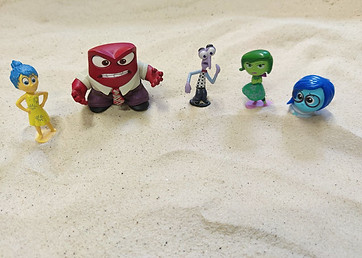What is Play Therapy
Play Therapy is a safe, confidential and caring method of therapy for children approximately aged 4-12. The therapist provides a warm and friendly space for the child to express themselves in play.
Children’s natural way of expressing themselves is through play. When children experience difficulties or traumas, play can help with processing feelings and regulating emotions.
Usually a child or young person comes to Play Therapy if there is something happening in their life that they are finding difficult to manage all by themselves. Sometimes when this happens a child’s feelings can seem very big. Play Therapy allows a child or young person the space to sort out these feelings and find a way to help them feel better. The Play Therapist will sometimes work with parents to find a way for them to help their child to feel better too.
Play Therapy is non-directive, where the therapist follows the childs lead and trusts the child to find the best way to solve their own problems by giving them the space and opportunity to do so.
It is best to invite and encourage your child to attend play therapy gently. If there are any issues with your child’s willingness to attend, please discuss with Karen for support with this.
Who Is it For?
Play Therapy can be a support to children and young people dealing with a range of issues.
Some examples include, but are not limited to:
-
Anxieties
-
Stress
-
'Big’ feelings
-
Emotional dysregulation
-
Bereavement and Loss
-
Parental Separation/Divorce
-
Social and Relationship concerns
-
Communication issues
-
Challenges related to neurodiversity
-
School refusal
-
Transitions
-
Trauma

Session Information
How long is it for?
That depends. Some children come for weeks, some children come for a few months and some for longer. The Play Therapist will talk to you about this at the beginning and during the work and will decide together with parent and child what is best for your child. The minimum recommended is 12 sessions. The sessions are for 45 minutes each week. It is important to attend all sessions, for your child’s benefit.
Is it Private?
The Play Therapist does not discuss what the child or young person is doing in the play room with anyone else unless there is a safety risk. It is ok for the child to talk to other children or adults about what they do in the play room if they wish.
A therapeutic session can allow your child work through their feelings. After each session it is good to give your child some space, and allow them to tell you about their experience in their own time, if they wish.
Approximately week 8-10, the play therapist will meet with you to discuss how the sessions are going, and if extended sessions would be of benefit.
What do the Sessions Involve?
Art – painting, drawing, creating
Sand Play – creating worlds in the sand tray using small figures
Sensory Play – Engaging their senses though Slime making, Ooblek, Waterbeads, Kinetic sand
Movement – Using balance toys, making their own fidget toys, dance, play fighting
Puppets – Creating characters and stories
Music – Using drums and other instruments to play with rhythm
Mindfulness – Practicing child friendly breathing exercises, using imagery to calm the nervous system
Games – Engaging in games the child enjoys, for relationship building,
Lego – Using Lego for creative expression
Axline’s Principles
Virginia Axline’s Principles of Non-Directive Play Therapy
The therapist should aim to:
-
Develop a warm and friendly relationship with the child
-
Accept the child as they are
-
Establish a feeling of permission in the relationship so the child feels free to express their feelings completely
-
Be alert to recognising the feelings the child is expressing and reflect the feelings back in such a manner that the child gains insight into their behaviour
-
Maintain a deep respect for the child’s ability to solve their problems and gives them the opportunity to do so
-
Not attempt to direct the child’s actions or conversations. The child leads, the therapist follows.
-
Not attempt to hurry the therapy along, it’s a gradual process
-
Only establish limitations necessary to anchor the therapy to reality and make the child aware of their responsibility in the relationship
